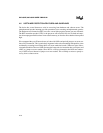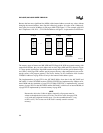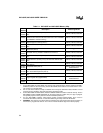
5-1
CHAPTER 5
MEMORY PARTITIONS
This chapter describes the organization of the address space, its major partitions, and the 1-Mbyte
and 64-Kbyte operating modes. 1-Mbyte refers to the address space defined by the 20 external
address lines. In 1-Mbyte mode, code can execute from almost anywhere in the 1-Mbyte space.
In 64-Kbyte mode, code can execute only from the 64-Kbyte area FF0000–FFFFFFH. The 64-
Kbyte mode provides compatibility with software written for previous 16-bit MCS
®
96 micro-
controllers. In either mode, nearly all of the 1-Mbyte address space is available for data storage.
Other topics covered in this chapter include the following:
• the relationship between the 1-Mbyte address space defined by the 20 external address lines
and the 16-Mbyte address space defined by the 24 internal address lines
• extended and nonextended data accesses
• a windowing technique for accessing the upper register file and peripheral special-function
registers (SFRs) with direct addressing
• examples of external memory configurations for the 1-Mbyte and 64-Kbyte operating
modes
• a method for remapping the 4-Kbyte internal ROM (83C196NP only)
5.1 MEMORY MAP OVERVIEW
The instructions can address 16 Mbytes of memory. However, only 20 of the 24 address lines are
implemented by external pins: A19:0 in demultiplexed mode, or A19:16 and AD15:0 in multi-
plexed mode. The lower 16 address/data lines, AD15:0, are the same as those in all other MCS
96 microcontrollers. The four extended address lines, A19:16, are provided by the EPORT. If, for
example, an internal 24-bit address is FF2018H, the 20 external-address pins output F2018H.
Further, the address seen by an external device depends on how many of the extended address
lines are connected to the device. (See “Internal and External Addresses” on page 13-1.)
The 20 external-address pins can address 1 Mbyte of external memory. For purposes of discussion
only, it is convenient to view this 1-Mbyte address space as sixteen 64-Kbyte pages, numbered
00H–0FH (see Figure 5-1 on page 5-2). The lower 16 address lines enable the device to address
page 00H. The four extended address lines enable the device to address the remaining external
address space, pages 01H–0FH.


















